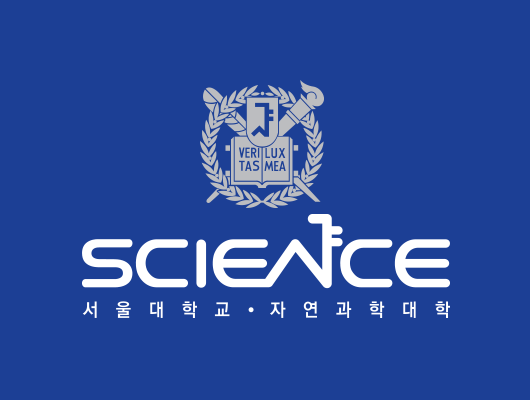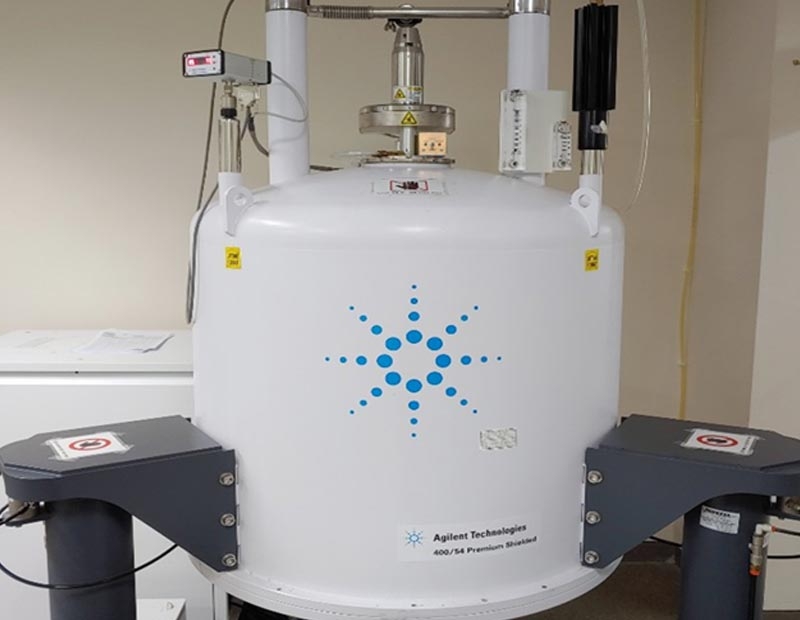
NMR Room, Shared Research Facility for Chemical Research
NMR Room, Shared Research Facility for Chemical Research
- · Leader : Prof. Park, Seung Bum (sbpark@snu.ac.kr / 02-880-9090)
- · Office : Building 502, 503
- · http://chem.snu.ac.kr/kor/faculty/facilities.asp
The NMR room (Nuclear Magnetic Resonance Spectroscopy) and the shared research facility are operated for the purpose of revitalizing research and strengthening research capabilities by providing graduate students and researchers in Faculty of Chemistry with an opportunity to jointly utilize high-performance and expensive research equipment and thus contribute to the vitalization of convergence research.
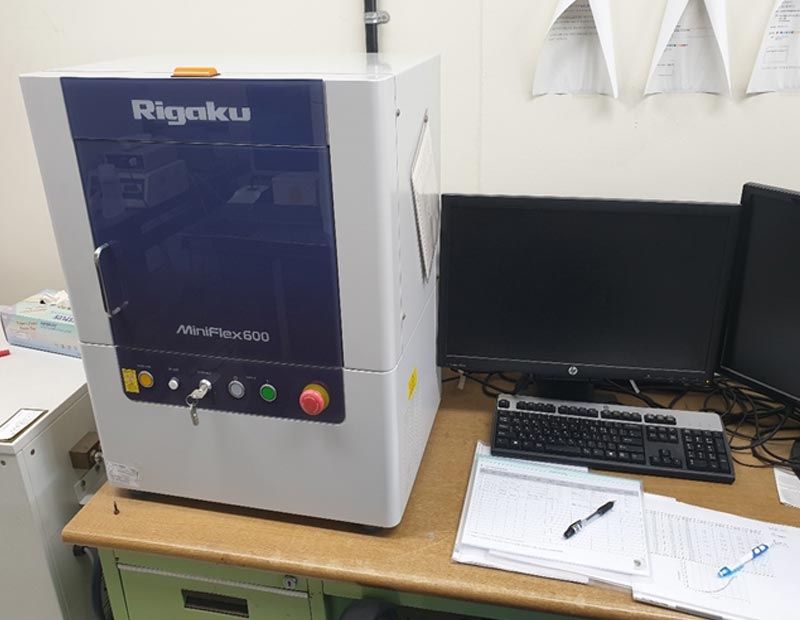
XRD Laboratory
XRD Laboratory
- · Leader : Prof. Lee, Sung Keun (sungklee@snu.ac.kr / 02-880-6729)
- · Office : 311, Building 24
X-Ray Diffractometer is an equipment that obtains information about the lattice structure of a sample by using diffraction rays generated when X-rays are projected on the sample. Crystalline earth materials such as minerals interfere constructively with the - line irradiated at a specific angle of incidence due to the crystal plane appearing in the internal lattice structure, and the results can be used to infer to which crystalline the lattice structure of the sample belongs to and the kind of symmetry the lattice structure has. In particular, if the composition of the sample is known, the results of X-ray diffraction analysis can determine which minerals the sample is made of. In the case of an amorphous earth material, a diffraction pattern where the unique lattice structure appears due to the atomic structure that disappeared can be obtained.
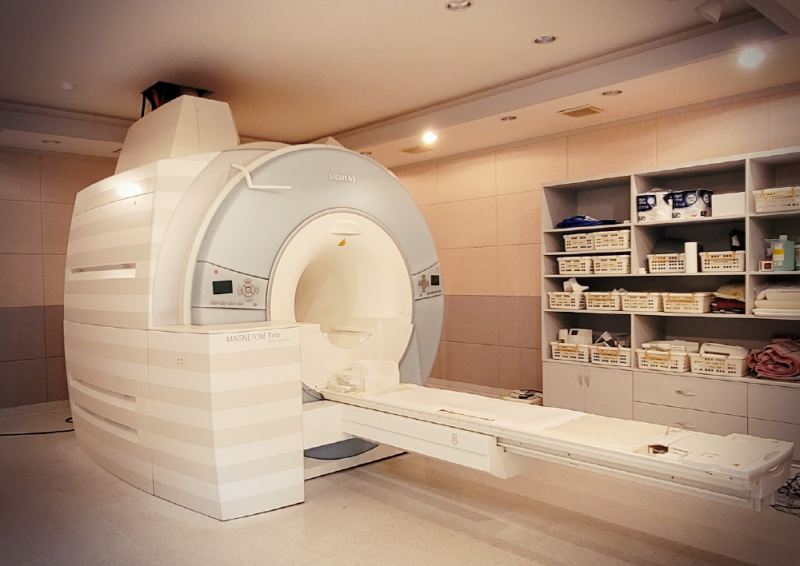
Shared Research Facility Department of Brain and Cognitive Sciences
Shared Research Facility Department of Brain and Cognitive Sciences
- · Leader : Prof. Lee, Sang Ah (sangahlee@snu.ac.kr / 02-880-8017)
- · Tel : 02-880-4999
- · Office : Bldg 203 Room B105
- · http://mri.snu.ac.kr/
Shared Research Facility for Department of Brain and Cognitive Sciences has a functional magnetic resonance imaging facility purely for research purpose, and it is open to not only users within Seoul National University but also to researchers outside Seoul National University to help promote research on brain cognition.
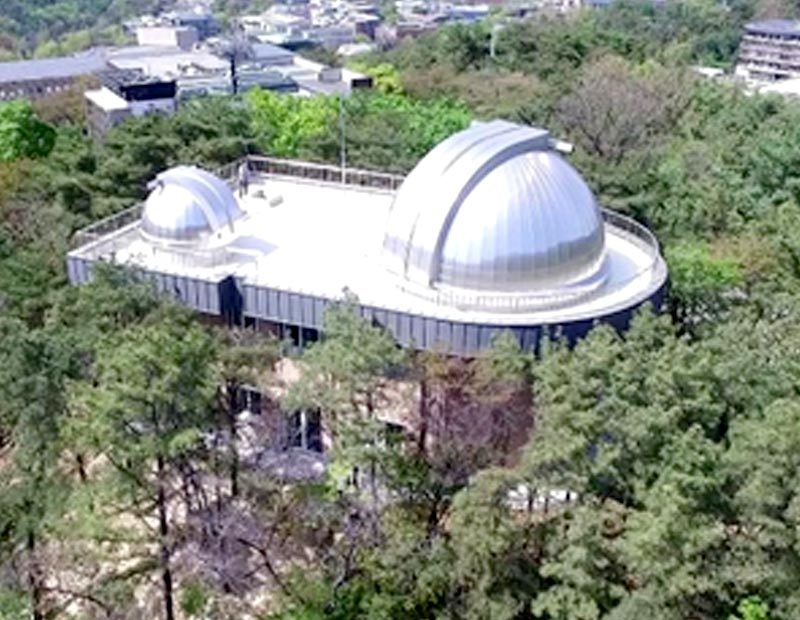
SNU Astronomical Observatory; SAO
SNU Astronomical Observatory; SAO
- · Leader : Prof. Lee, Myung Gyoon (mglee@snu.ac.kr / 02-880-6684)
- · Office : Building 46
- · http://astro2.snu.ac.kr/sub04/sub02.php
“Seoul National University’s 1st Optical Observatory” (known as Old Observatory) was first opened in 1978 and is located on the Gwanak Campus as an observatory newly reconstructed in 2017 and equipped with the latest astronomical observation facilities. Seoul National University’s Observatory is equipped with an optical telescope with a diameter of 1m, the largest in any university in Korea, and is used for astronomical observation research, education of undergraduate and graduate students, as well as cultural events to raise public interest in the universe.
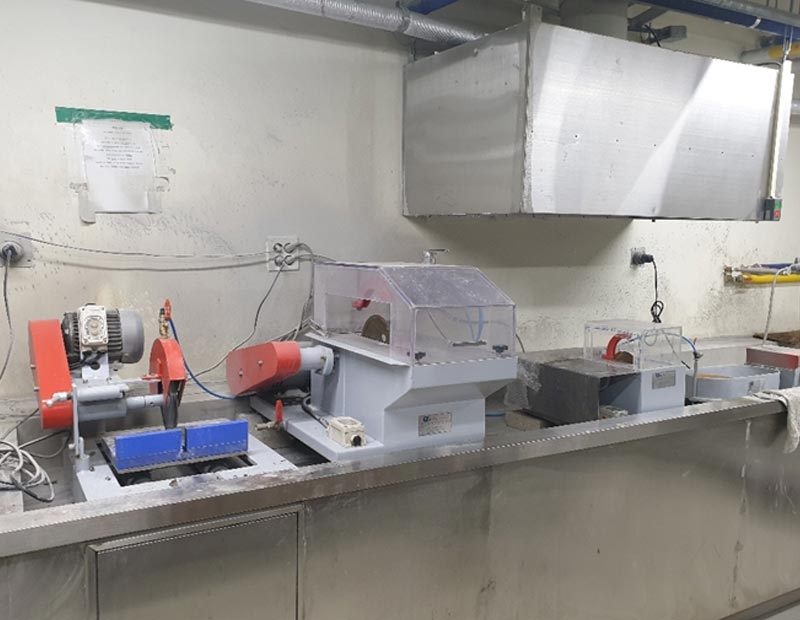
Specimen Room
Specimen Room
- · Leader : Prof. Lee, Sung Keun (sungklee@snu.ac.kr / 02-880-6729)
The machine is used to cut rock specimens to the required size and allows researchers to obtain specimens of the precise size and cut plane.
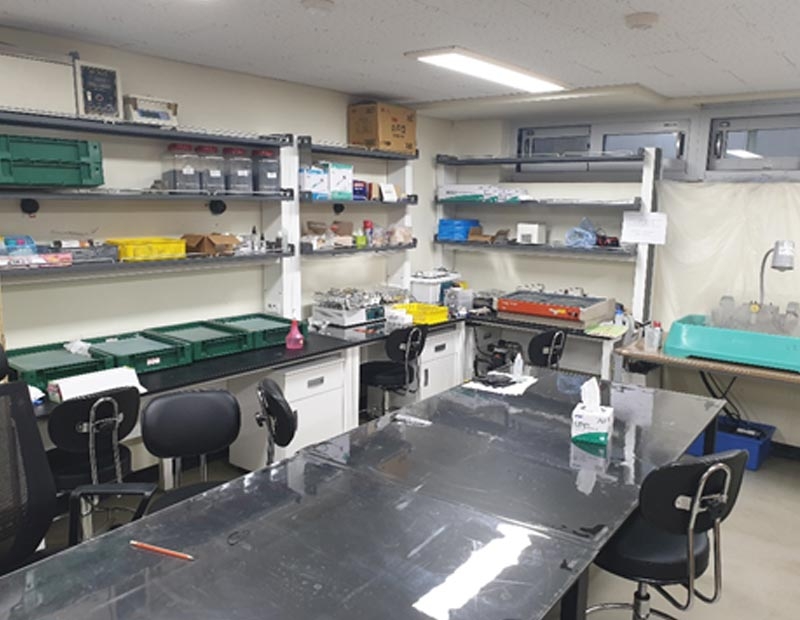
Polisher/Lapper Room
Polisher/Lapper Room
- · Leader : Prof. Lee, Sung Keun (sungklee@snu.ac.kr / 02-880-6729)
- · Office : B104, Building 24
The machine is used to polish and grind specimens for microscopic observation of specimens collected from rock samples.
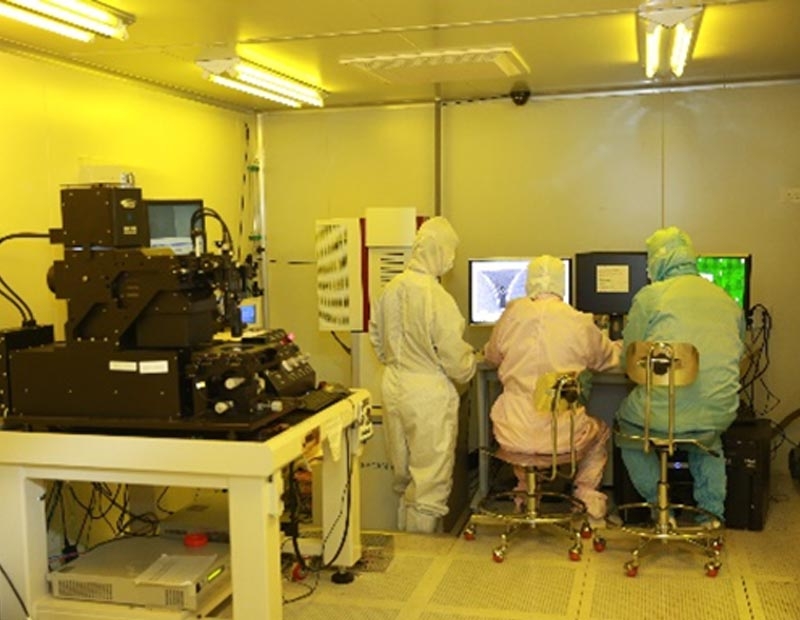
Applied Physics Lab Clean Room
Applied Physics Lab Clean Room
- · Leader : Prof. Park, Yun (yundanpark@gmail.com / 02-880-1361)
- · Office : 118, 220, Building 2
- · https://iap.snu.ac.kr
The clean room belonging to Department of Shared Facility Management of Institute of Applied Physics is a laboratory specially designed for particle production, maintaining constant temperature and humidity 24 hours a day and 365 days a year and providing a clean environment by blocking dust from the outside through an air shower device and an air purification device.
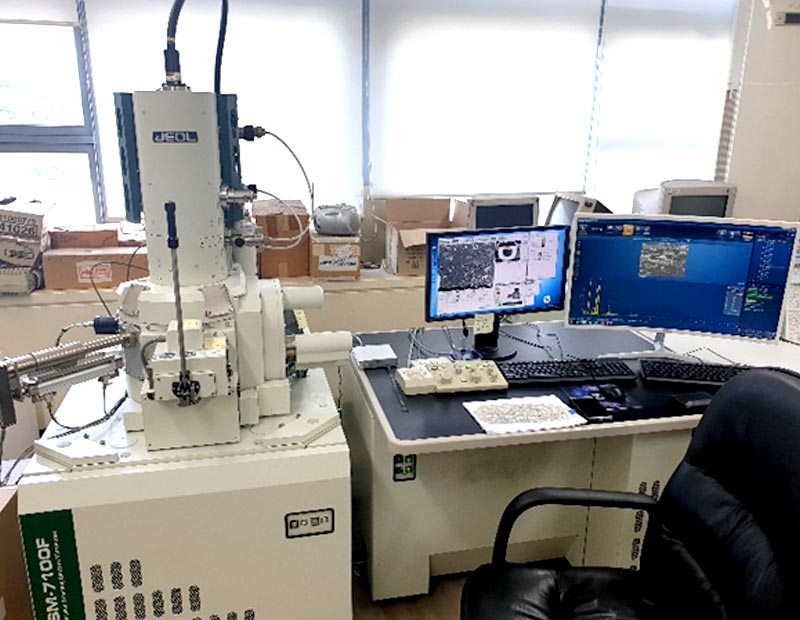
Electron Microscopy Room
Electron Microscopy Room
- · Leader : Prof. Jung, Haemyeong (hjung@snu.ac.kr / 02-880-6733)
- · Office : 502, Building 25-1
Electron Microscope is a microscope that allows researchers to analyze the surface of mineral rocks (igneous rocks, metamorphic rocks, sedimentary rocks, resource minerals, fossils, etc.) as part of an experiment in the Earth Environment Science experiment and to conduct analysis of component and directions of mineral crystal that can’t be done with an optical microscope, and is necessary to observe the shape and microstructure of minerals.
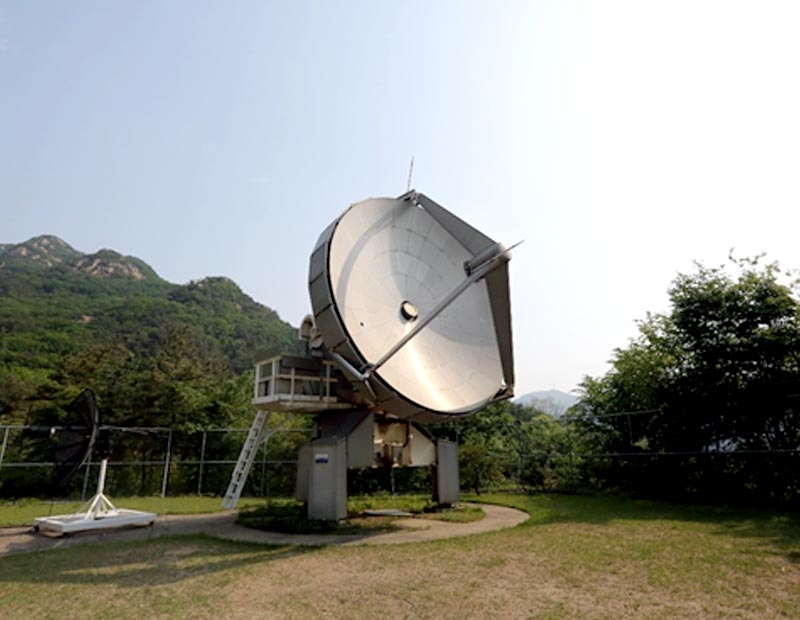
Radio Astronomical Observatory, SRAO
Radio Astronomical Observatory, SRAO
- · Leader : Prof. Park, Yong-Sun (yongsunp@snu.ac.kr / 02-880-8979)
- · Office : Building 48-1
- · http://astro2.snu.ac.kr/sub04/sub04.php
Opened in April 2002, the Seoul National University Radio Astronomy Observatory has a state-of-the-art millimeter wave radio telescope. The radio telescope has a diameter of 6 meters, and has a radio receiver and an autocorrelation spectrometer that can observe cosmic radio waves in the 85-115 GHz (wavelength 2.6-3.4 mm) band. Using these instruments, research is being conducted on a wide-area exploration of interstellar clouds, supernova remnants, and outer galaxies by analyzing transition lines of various molecules, including the rotational transition line of carbon monoxide (CO) molecules which are very important for astronomical research.
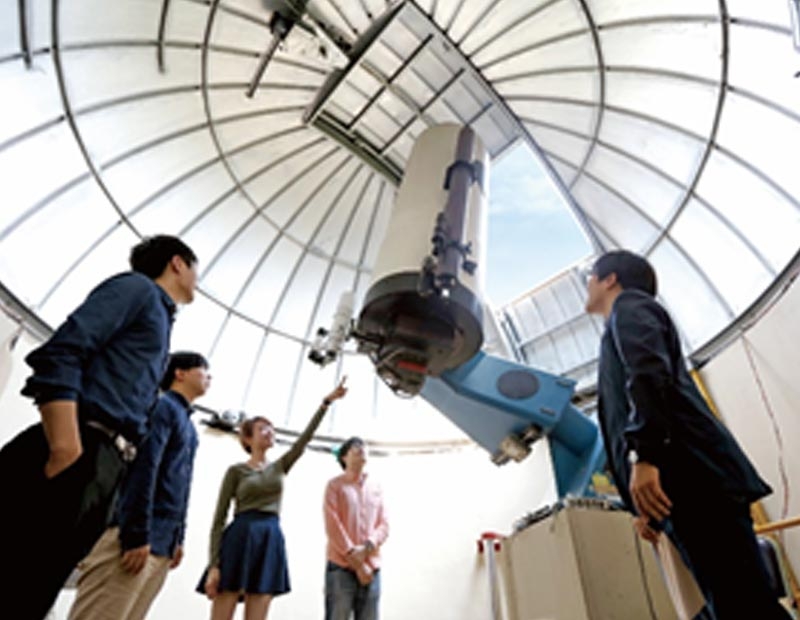
Center for Astronomy and Space Science
Center for Astronomy and Space Science
- · Leader : Prof. Im, Myungshin (m_im@snu.ac.kr / 02-880-6585)
- · Office : Building 45
- · http://astro2.snu.ac.kr/sub04/sub03.php
Originally opened in December 1990, the Second Optical Observatory was remodeled in January 2016 and renamed as “Astronomical Space Center”. A 60cm Ritchey-Chretien type reflecting telescope is installed in a 6.5m diameter dome. As of 2018, a three-color polarized imaging device called Tripol is installed in the 60cm telescope, and is being used for research on asteroids and variable astronomical observations and for graduate/undergraduate observational education.
